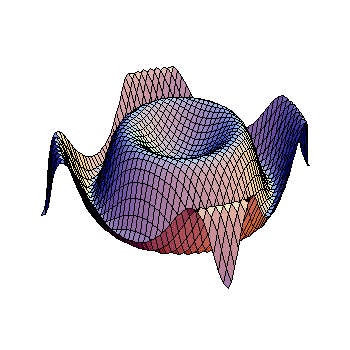The volume of a sphere is changing at a constant rate of #pi/3 \ cm^3s^-1#. How fats is the surface area changing when the volume is #(9pi)/2#?
2 Answers
# (dA)/dt =(4pi)/9 \ cm^2s^-1#
Explanation:
Let us set up the following variables:
![enter image source here]()
# {(r, "Radius of sphere at time t","(cm)"), (A, "Surface area of sphere at time t", "(cm"^2")"), (V, "Volume of sphere at time t", "(cm"^3")"), (t, "time", "(sec)") :} #
Our aim is to find
The standard formula for Area & Volume of a sphere are:
# V=4/3pir^3 \ \ \ \ .... [1] #
#A=4pir^2 \ \ \ \ \ \ .... [2] #
When
# :. r^3 =9/2*3/4 #
# :. r =3/2 #
Differentiating [1] and [2] wrt
# (dV)/(dr)=4pir^2 # and# (dA)/(dr) = 8pir #
And from the chain rule we get:
# (dA)/dt =(dA)/(dr) * (dr)/(dV)* (dV)/(dt) #
# \ \ \ \ \ \ \=8pir * 1/(4pir^2) * (dV)/(dt) #
# \ \ \ \ \ \ \=2/r * (dV)/(dt) #
So when
# (dA)/dt =2/(3/2) * pi/3 #
# \ \ \ \ \ \ \=(4pi)/9 #
Explanation:
given that,
when
Area pf sphere,
when
therefore,


